How To Rebuild A Damaged Toenail
Damaged, broken or bitten toenails can be an extremely common concern, but it is something your client needn’t be embarrassed about. The damage can occur from sports, running or an accident, poor fitting shoes or through keeping toenails too long. It’s more common than you think and a simple 20-minute appointment can allow the tech to safely rebuild the damaged toenail, leaving your client feeling confident.
To be able to achieve this, the client must have some nail there, however short. You would tend to the enhancement just as you would for a nail biter, customising and applying a nail form to build the product up. This method allows the L&P or gel product to form the natural shape of the toenail without skin contact. This reconstruction can be created in the same technique on any toenail but the big toe is often the most common. It is important to do a thorough visual and written consultation, to determine the cause of the damage and assess whether the client is safe to have the treatment. If there is an infection or there is any open skin, you must wait for this to heal before treating.
The most important consideration when rebuilding a toenail is ensuring that you are not touching the skin with uncured product. Great care can often be taken when treating the fingernails but forgotten when attending to toes. It is also important to leave a small margin by the sidewall so to not have skin contact with the uncured product, but so that water will have a place to evaporate and not get trapped. I recommend using a transparent pink to create the toenail, so that tech and client can see and be aware of what is going on underneath.
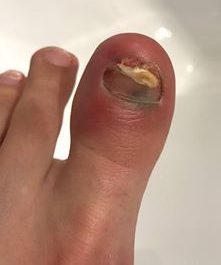
An infected toenail after initial damage
If there is no nail growth whatsoever, it makes things a little trickier, with more maintenance required. You can still use a form to protect the skin, sculpt the shape of a toenail onto the nail bed and, with the OK from a GP or dermatologist, the client can adhere this to be nail bed using a medical grade skin adhesive, which can often be purchased from a pharmacy. A medical grade skin glue is paramount and never the use of nail glue or superglue so to not encourage bacteria growth from trapped water, skin irritations or allergies. As mentioned, always use a transparent pink enhancement product so that the client can remove the polish but still see and be able to monitor the nail bed underneath.
The client must be aware and prepared to attend regular maintenance appointments every 2-3 weeks. The shorter and more damaged the natural nail, the sooner they must get this maintained to prevent further damage or problems. The damage may be permanent or grow out in 6-12 months. This will determine whether the client will become long-term or a one-off appointment. Whether the client has regular polish, or gel polish, it is essential to remove this and replace to monitor the nail bed and natural nail underneath. While it is important to make the client feel confident by rebuilding their toenail, caring for the natural nail health and nail integrity is even more important otherwise there will be a never-ending cycle of rebuilding the enhancement, along with other potential issues.
Learn more about how to repair a damaged toenail on my Salon Tech Masterclass.
Love Katie B x


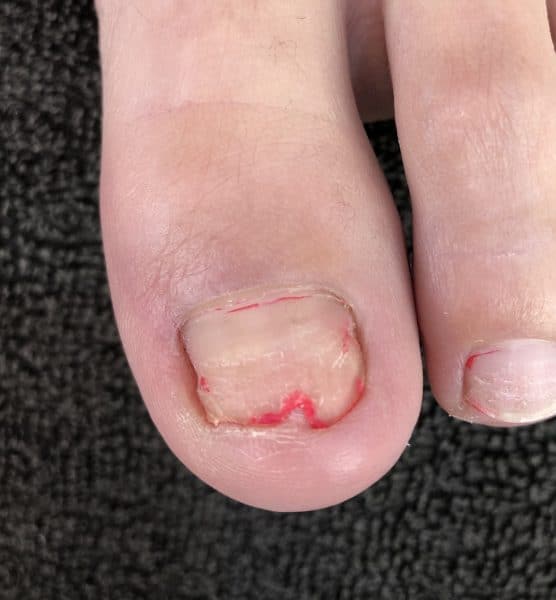
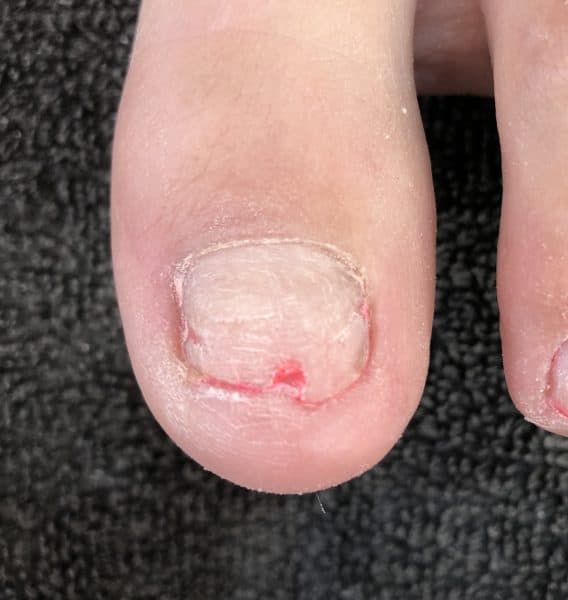
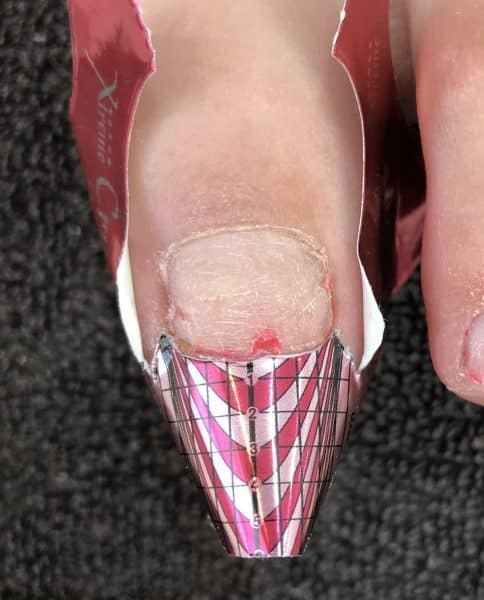
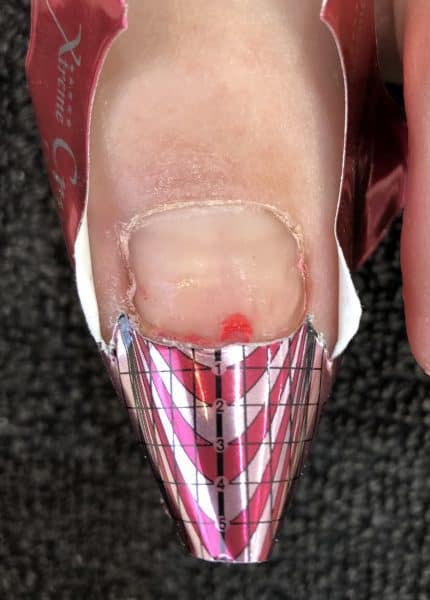
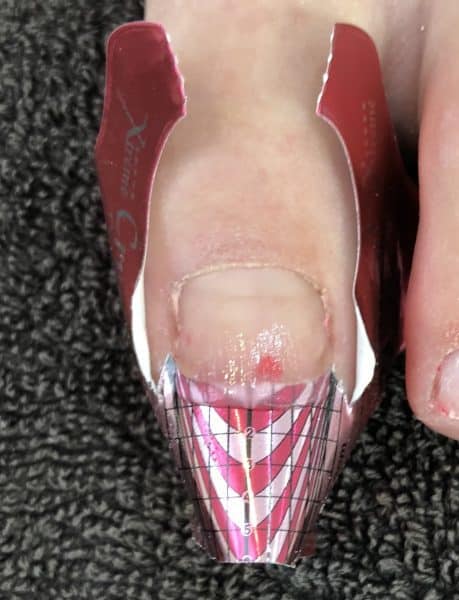
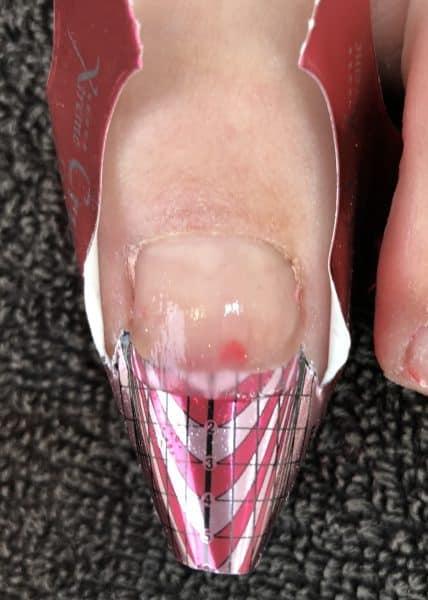
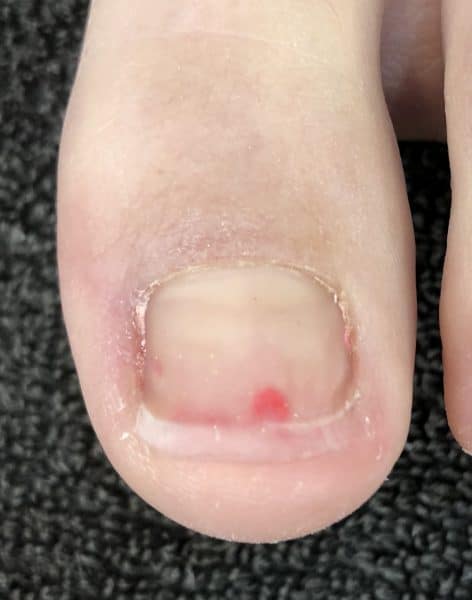
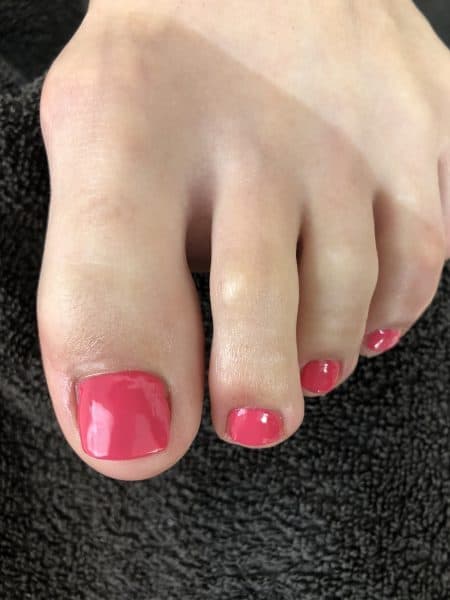
Thank you!
Leave a comment